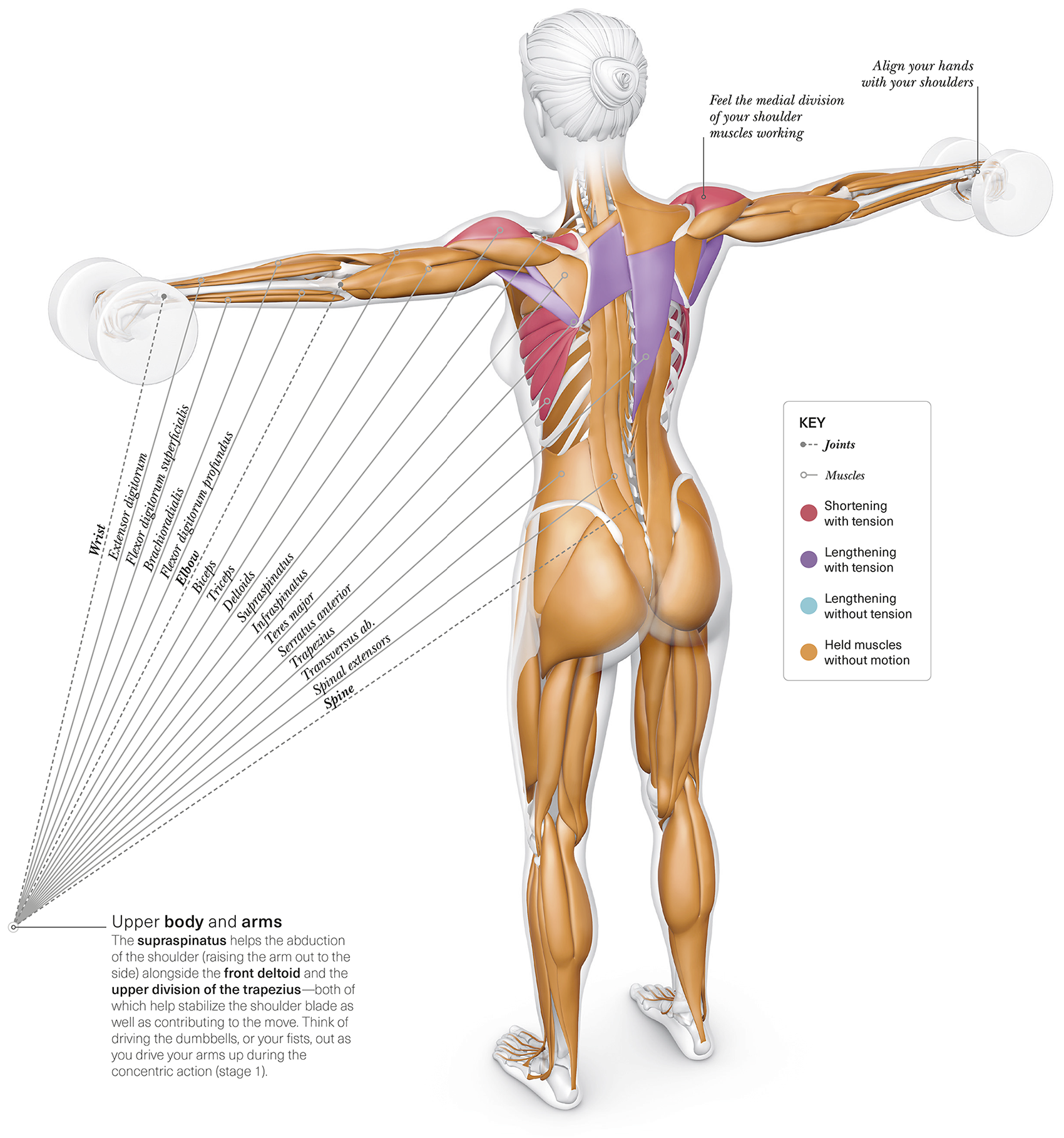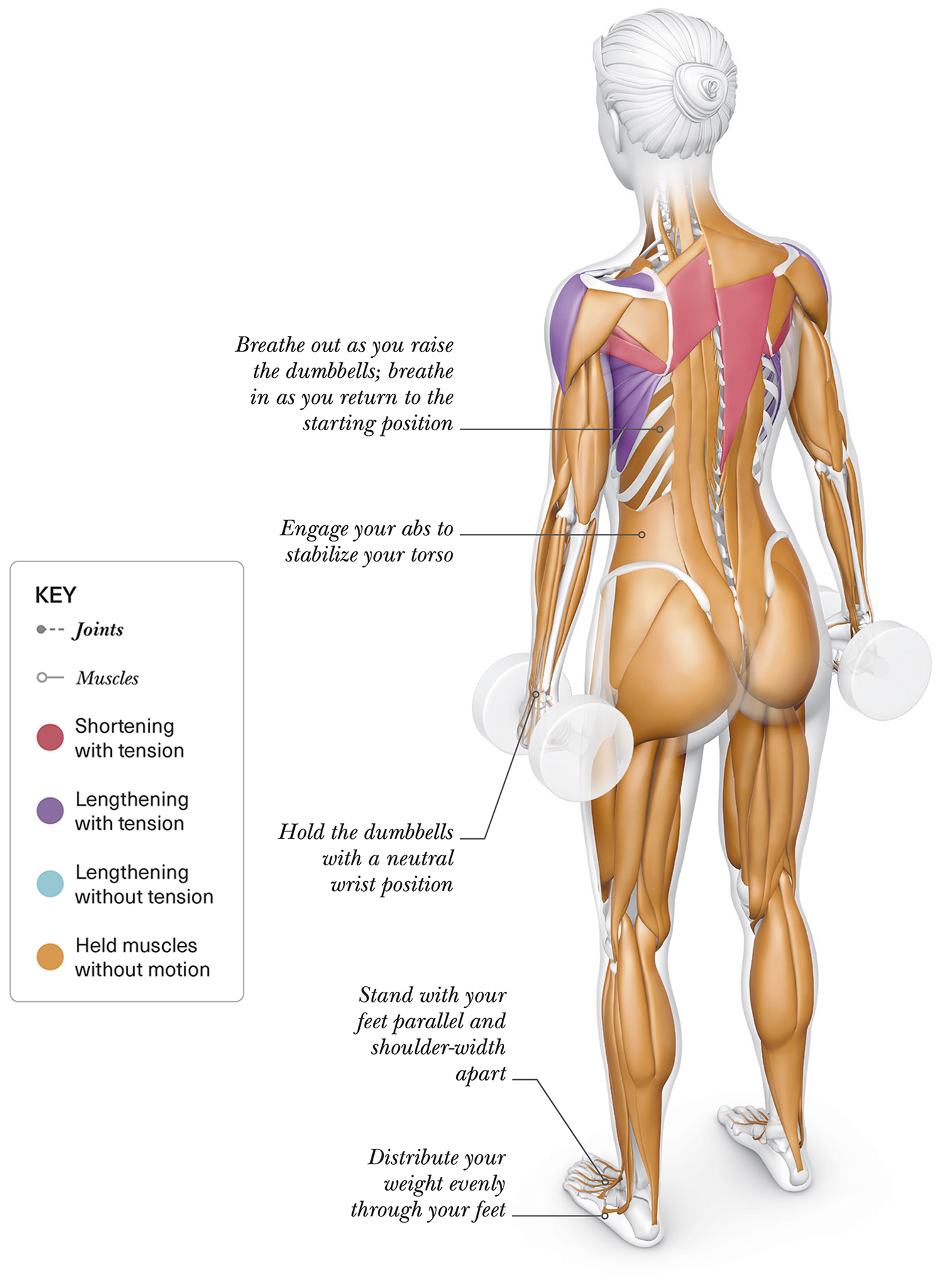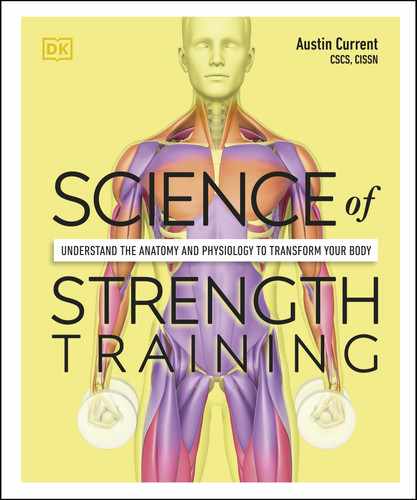dumbbell lateral raise
The middle part of the deltoid muscle is the focus of this exercise, along with the supraspinatus and the upper part of the trapezius, which stabilize your shoulder blades. The lateral raise is a safe and effective way to train your shoulders using minimal equipment.
the big picture
Raising and lowering dumbbells laterally—out to the sides of your body—isolates and trains the medial division of the deltoid. Keep the movement smooth and controlled at all times; don’t throw the weights up and let them fall down.
Beginners can start with 4 sets of 8–10 reps; discover other variations on and other targeted sets in the training programs.
PREPARATORY STAGE
Stand with your feet parallel and shoulder-width apart. Let your arms hang naturally with the dumbbells securely in your hands. Depending on your structure, you may need to rotate the dumbbells inward slightly to better match up with the middle of your delts.

n Double-tap image to read the labels
stage one
Breathe in and engage your abs to stabilize and tighten your core. Breathe out as you use your deltoid muscles to raise the dumbbells away from your body. Stop when your arms are parallel to the floor. To add a challenge, hold this top position for 1 second.

n Double-tap image to read the labels
POSTERIOR-LATERAL VIEW
Upper body and arms
The supraspinatus helps the abduction of the shoulder (raising the arm out to the side) alongside the front deltoid and the upper division of the trapezius—both of which help stabilize the shoulder blade, as well as contributing to the move. Think of driving the dumbbells, or your fists, out as you drive your arms up during the concentric action (stage 1).
stage two
Keeping tension in your shoulders, breathe in as you lower your arms with control, resisting the load. Pause for 1 second in this bottom position to help reduce momentum going into your next rep and to reset your breathing. Repeat stages 1 and 2.

n Double-tap image to read the labels
![]() Common mistakes
Common mistakes
If you are moving your lower body and bending your knees, you could be lifting too heavy a weight. Avoid lowering the weights quickly without control: you miss out on the powerful eccentric contraction.
